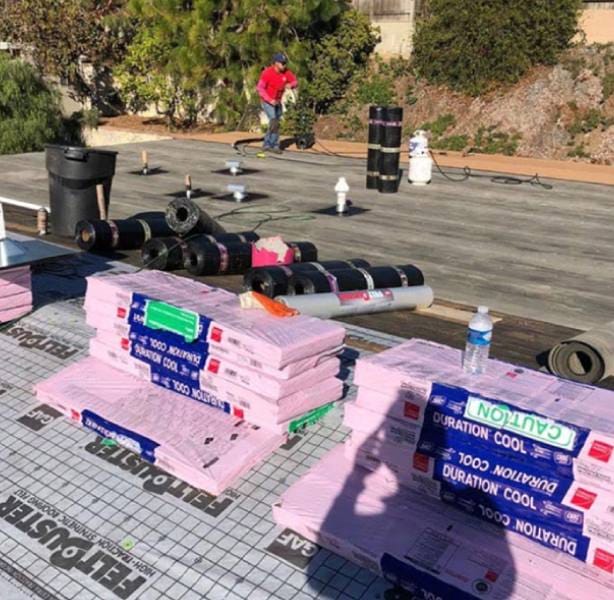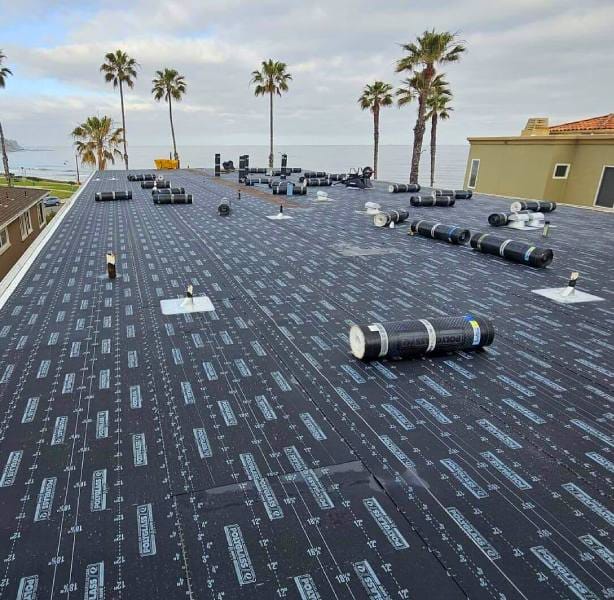Choosing Wisely: Discovering the Best Roofing Options for Commercial Buildings
Introduction
Choosing the right roofing option for commercial buildings is crucial for their longevity, energy efficiency, and overall aesthetic appeal. The choices can be overwhelming, but understanding the various types of roofing materials and their benefits can empower business owners to make informed decisions. In this article, we will explore a variety of roofing options available for commercial buildings, providing insights into their advantages and considerations. We'll also highlight how commercial roofing contractors in Seattle can help you through this process.
Understanding Commercial Roofing Systems
What Are Commercial Roofing Systems?
Commercial roofing systems differ from residential roofs due to their design, materials, and installation techniques. These roofs are often flat or low-sloped and require specific materials to ensure proper water drainage and durability.

Types of Commercial Roofing Systems
There are several types of commercial roofing systems available. Some common options include:
- Built-Up Roofing (BUR)
- Modified Bitumen
- Single-Ply Membrane
- Metal Roofing
- Green Roofing
Each type has its unique features that cater to different needs.
Choosing Wisely: Discovering the Best Roofing Options for Commercial Buildings
Built-Up Roofing (BUR)
What is BUR?

Advantages of BUR

- Long lifespan
- Excellent waterproofing capabilities
- Low maintenance
Considerations
Installation can be labor-intensive and may take longer compared to other systems.
Modified Bitumen Roofing
Understanding Modified Bitumen
This system combines asphalt with modifiers for enhanced performance. It's available in rolled sheets that can be installed using heat or adhesives.
Benefits of Modified Bitumen
- Flexibility in various temperatures
- Good resistance to UV rays
- Easy repairs
Limitations
While it’s effective, it may not last as long as some other options under extreme weather conditions.
Single-Ply Membrane Roofing
What is Single-Ply Membrane?
Single-ply membranes come in large sheets made from synthetic materials such as EPDM, TPO, or PVC.
Pros of Single-Ply Membrane Systems
- Lightweight and easy to install
- Energy-efficient options available (reflective surfaces)
- Cost-effective
Cons to Consider
Repairing punctures may require professional help if you're not experienced with the material.
Metal Roofing
Exploring Metal Roofing Options
Metal roofs are made from steel, aluminum, or copper. They are gaining popularity due to their durability and modern appearance.
Advantages of Metal Roofs
- Extremely long-lasting (up to 50 years)
- Resistant to severe weather conditions
- Environmentally friendly as they are often made from recycled materials
Disadvantages
Initial costs can be higher than some traditional options.
Green Roofing Solutions
What is Green Roofing?
Green roofs incorporate vegetation and soil on top of a waterproof membrane. They provide insulation and reduce stormwater runoff.
Benefits of Green Roofs
Challenges
The installation process is complex and requires careful planning for weight distribution.
Factors Influencing Your Choice
Climate Considerations
The local climate plays a significant role in determining the best roof type. For instance, areas with heavy rainfall might benefit from a durable built-up roof while sunny regions could opt for reflective single-ply membranes.
Building Design and Structure
The architecture of your building might dictate roofing choices based on slope requirements or structural support capabilities.
Budget Constraints
It's essential to balance initial installation costs with long-term maintenance expenses when choosing your roofing system.
Finding Commercial Roofing Contractors in Seattle
Why Choose Local Contractors?
Local contractors understand the regional climate challenges better than distant companies. They’re more familiar with local building codes too!
Questions to Ask Potential Contractors
Checking Credentials
Make sure any contractor you consider is licensed, insured, and bonded before hiring them for your project.
Maintenance Tips for Commercial Roofs
Regular Inspections
Schedule regular inspections at least twice a year or after major storms to identify potential issues early on before they escalate into costly repairs.
Cleaning Debris
Keep gutters clear and remove debris like leaves or branches from the roof surface periodically to prevent water damage.
Common Misconceptions About Commercial Roofing
Myth: All Roofs Last Forever
trusted commercial roofing SeattleWhile high-quality roofs have long lifespans, they still require maintenance and eventual replacement depending on wear factors like weather conditions.
Fact: Not All Materials Are Equal
Different materials have varying lifespans; knowing which ones suit your needs best can save money down the line!
Cost Analysis for Different Types of Roofs
| Type | Initial Cost | Lifespan | Maintenance Cost | |--------------------|--------------|----------|------------------| | Built-Up | Medium | 20+ years| Low | | Modified Bitumen | Medium | 15 years | Medium | | Single-Ply | Low | 20+ years| Low | | Metal | High | 50+ years| Low | | Green | High | 40+ years| High |
FAQs About Commercial Roofing Options
What type of roof lasts the longest?
Metal roofs typically last up to 50 years when maintained properly compared to other options like modified bitumen which lasts around 15–20 years.
How do I choose a reliable contractor?
Look for reviews online, ask for references from past clients, check credentials like licensing/insurance/bonding status.
Are green roofs worth the investment?
Yes! While upfront costs may be high due to installation complexity, benefits like energy savings & increased property value offset those costs over time.
Can I install my own commercial roof?
It’s possible if you have experience; however hiring professionals reduces risk significantly especially regarding compliance with local building codes.
What should I do if my roof leaks?
Contact a licensed contractor immediately—they’ll assess damages & recommend necessary repairs.
How often should I inspect my commercial roof?
At least twice per year plus after severe weather events—this helps identify damage early before it worsens!
Conclusion
Choosing wisely when selecting roofing options for commercial buildings requires an understanding of various materials’ strengths and weaknesses along with cost implications. Partnering with experienced commercial roofing contractors in Seattle ensures that your building gets the best care possible while adhering closely to local regulations. Remember that maintaining your chosen roof will keep it functioning optimally throughout its lifespan!